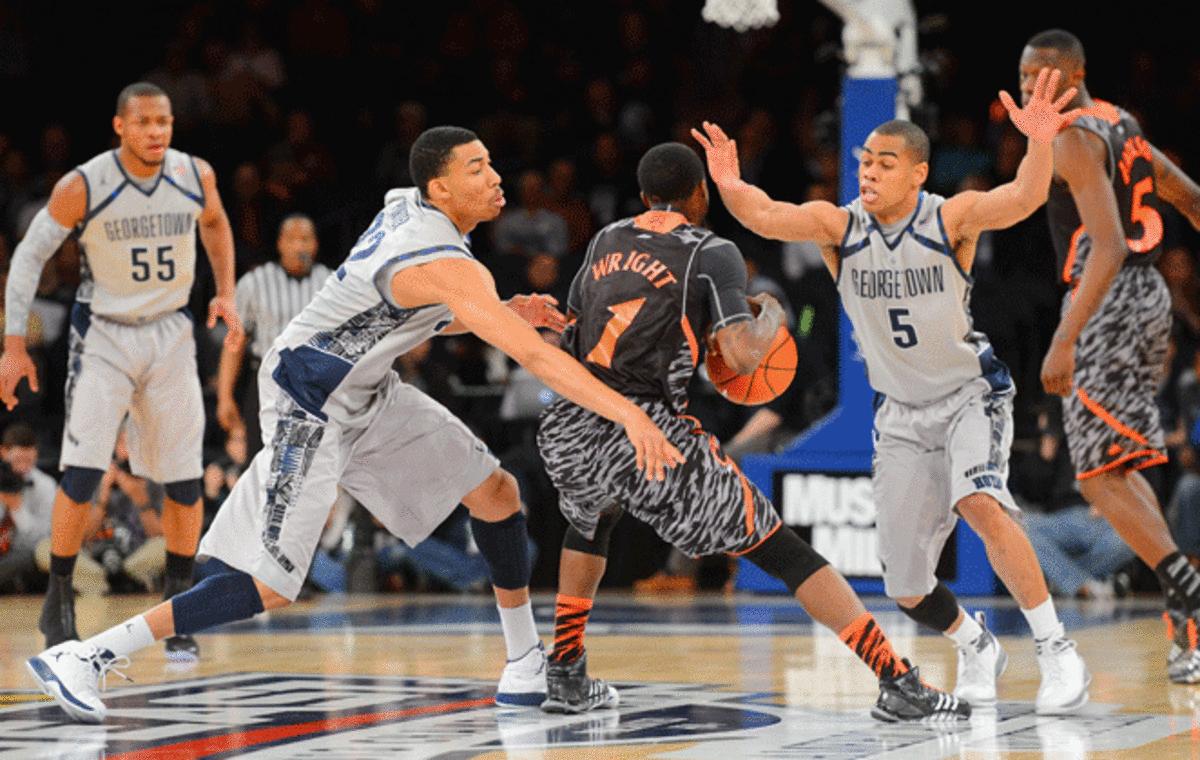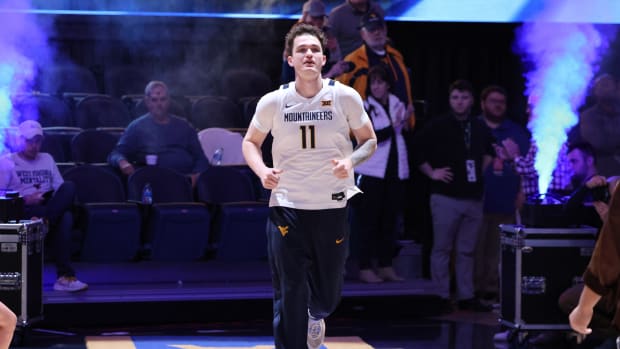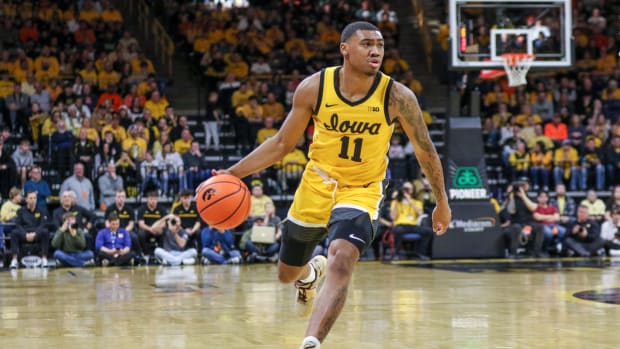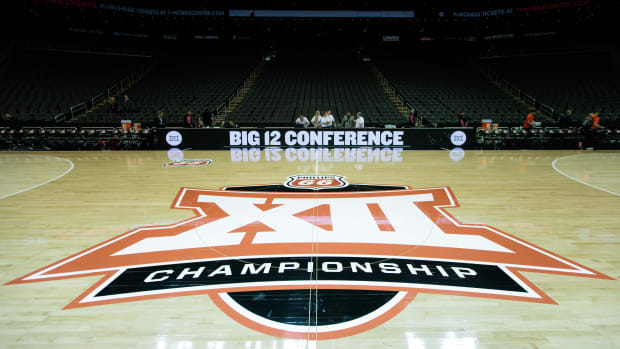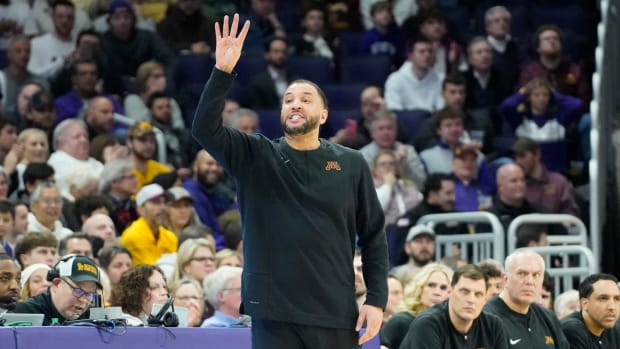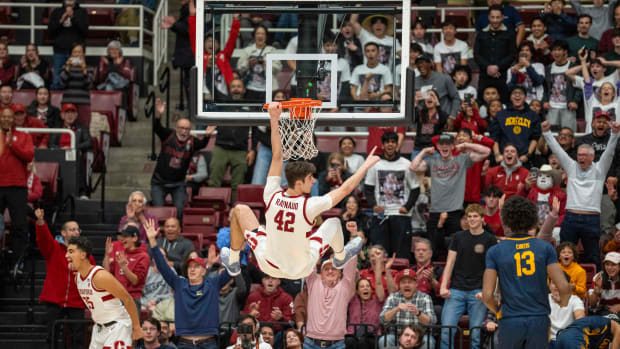Georgetown's power causing tension among new, old Big East schools

Georgetown has emerged as the headliner of the Catholic schools breaking away from the Big East.
/Icon SMI
NEW YORK -- In the final rendition of the Big East Tournament as we knew it, Georgetown has emerged as the unquestioned headliner. The Hoyas have the top seed, best player in Otto Porter, and coach John Thompson III has done the best coaching job in the league this year.
The Hoyas also delivered the matchup everyone wants to see, clawing past Cincinnati on Thursday to set up a fitting final Big East game with storied rival Syracuse in the semifinals on Friday night.
Off the court, the Hoyas are taking a victory lap, too. This has not been as well received. The actions of Georgetown president Jack DeGioia have peeved officials in both Georgetown's new and old leagues and raised questions of whether the Hoyas are wielding too much power in the formation of the "new" Big East.
DeGioia has emerged as the most powerful leader in the new league. He's also been a divisive one, as it took months of lobbying to convince DeGioia to break away from the Big East and join the Catholic Seven. Officials around the league were flabbergasted when he broke the league's media ban to take credit for leadership in a league he was reluctant to join. The tension resurfaced recently after a profile of DeGioia appeared in the Washington Post with the headline, "Georgetown takes lead in preserving basketball tradition of Catholic 7."
"Not only are they doing a victory lap, they're not doing the work to earn it," said one school official. "At the time they want all the dealings to be clandestine; for them to go out front and take credit is beyond reprehensible."
Added another: "There were a lot of eye rolls."
DeGioia couldn't be reached for comment.
DeGioia is a philosopher and considered a brilliant academic. But the conference game is predicated on business and television acumen, and those skills are being questioned. The oddest part of the Catholic Seven's TV deal with Fox is that the conference declined to take their product to market, canceling meetings with high-level potential TV partners.
Fox's offer of nearly $500 million, which will pay schools north of $4 million per season, was contingent on not talking to another network. It's certainly a good deal and the league is the cusp of banking a lot of money. But there's a strong feeling in the television industry that the Catholic Seven left some money on the table, as it could have received more cash and exposure if it cut a deal with two different networks. There were no lack of suitors, and the decision to not take meetings to explore other options was considered an anomaly.
"Very unusual," said an industry source. "I don't ever recall a situation with a property like this where people didn't at least take meetings to find out what other opportunities will be out there."
DeGioia is viewed in "old" Big East circles as one of the most vocal opponents -- along with officials from Rutgers, Notre Dame and Pitt -- of the Big East signing a deal for $130 million annually with ESPN nearly two years ago. To compare, the deal the soon-to-be-renamed Big East just signed is worth $130 million over seven years.
There will always be the question of whether Pitt and Syracuse would have defected if the Big East had signed that ESPN deal in May 2011. The answer is likely yes, as the there's seemingly nothing that could stop the gale force of realignment. The decision to reject the television deal looks foolish in retrospect. At DeGioia's suggestion, Georgetown Board Chair Paul Tagliabue was brought in to consult on Big East matters. He famously insisted, "We can manage the risk," when convincing officials to take the league to the open market. The Big East couldn't manage the risk. It fell apart within 18 months.
Recently, John Thompson III joked that he'd love to call the new Big East "the Georgetown league." But when you look at what's happened, he may not be joking. There have been formal discussions about the new league's office being in Washington. The lawyer who is essentially acting as commissioner, Joe Leccese, is a Georgetown graduate. The person who will be spearheading the search for the new commissioner, Liz Boardman of Russell Reynolds, is a former Georgetown field hockey player.
While Georgetown's fingerprints are obvious, a big test of Georgetown's power will be whether or not VCU joins the league in the next wave of expansion. While Georgetown hasn't lobbied against VCU in meetings, television sources say that the Hoyas don't want VCU in the league. (The prevailing thought being that VCU is too close geographically for Georgetown's comfort and being a public school doesn't fit the profile.) Many schools in the Catholic Seven are enamored with VCU, especially because the league's bottom four teams -- Providence, DePaul, Seton Hall and St. John's -- have combined to win just one NCAA tournament game in the last 10 years.
Thompson III's "Georgetown League" may be closer to a reality than most people realize. And as the "new" Big East sits on the cusp of a promising new future, some are wondering if there's too much Georgetown in the "Georgetown League."
